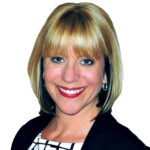
Q: Social isolation is being added to the MDS this Oct. 1. How should we care plan this new item?
A: Social isolation is a self-reported social determinant of health item coming to the Minimum Data Set this October. Section D responses range from “never” to “always,” with options if the resident is unwilling or unable to respond.
Social isolation refers to lack of social contact with others. One-fourth of adults over 65 are socially isolated, according to NASEM. Loneliness is the feeling of being alone, regardless of social contact.
The Centers for Disease Control and Prevention warns that social isolation and loneliness increase serious health risks, including risk of premature death. They also increase healthcare utilization. Chemical restraint, fall incidence, incontinence and feeding tubes increase residents’ risk for social isolation.
When residents self-disclose social isolation, develop a care plan to mitigate or eliminate associated risks. Care planning for social isolation requires in-depth analysis of a resident’s experience, contributing factors and associated risks. Consider residents’ social networks, individual relationships’ strength and psychosocial functioning.
Care planning should cover both a stay and after discharge. For residents lonely in the facility, invite them to activities they enjoy. If preferred activities aren’t available, try to incorporate them. For example, residents accustomed to a daily walk may enjoy a restorative walking program. When discharge planning, emphasize interventions such as visits from family, friends, clergy, or community groups.
Because social isolation has such a significant impact on health risks, addressing it effectively positions residents for wellness both during and after their stays in a facility.
Please send your nursing-related questions to Amy Stewart at [email protected].




